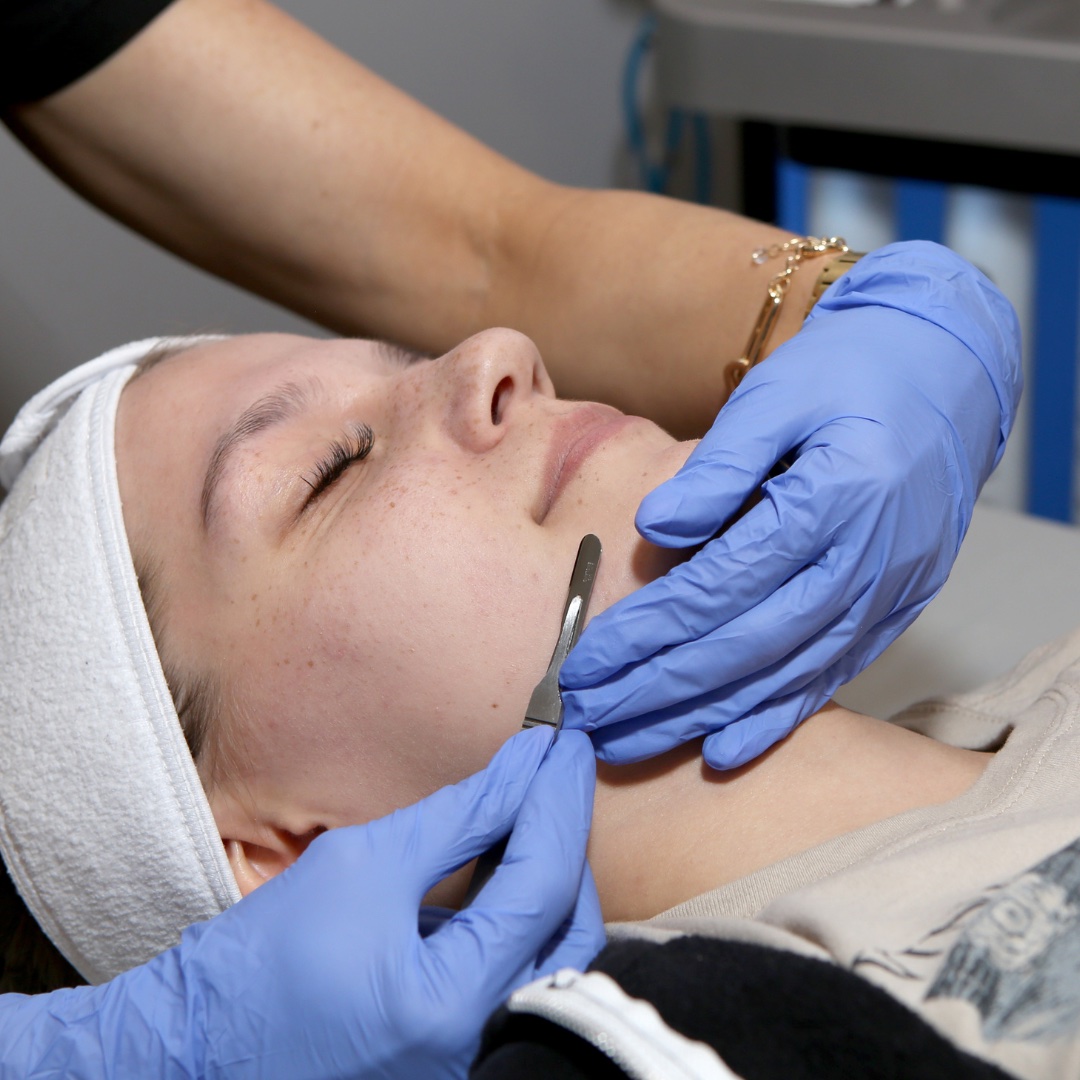Achieving smooth and radiant skin is a goal for many people, and there are various methods to achieve it. One popular method is dermaplaning which is a non-invasive exfoliation treatment that uses a surgical scalpel to remove dead skin cells and peach fuzz from the face, leaving behind a smooth and glowing complexion. In this article, we will dive into the basics of dermaplaning and how it can benefit your skin.
What is Dermaplaning?
Dermaplaning is a facial treatment that involves the use of a sterile, scalpel to gently scrape away dead skin cells and fine hair (vellus hair) from the surface of the skin. It is a safe and effective exfoliation method that requires no downtime and is suitable for all skin types, including sensitive skin.
The procedure is usually performed by a licensed esthetician or a dermatologist. It involves holding the skin taut and using short, feathering strokes to remove the outermost layer of dead skin cells and peach fuzz. The result is a smoother, brighter, and more even complexion. The process takes about 30-45 minutes and can be performed every four to six weeks.
Benefits of Dermaplaning
1. Exfoliation
Dermaplaning is a form of physical exfoliation that helps to remove dead skin cells and impurities from the surface of the skin. This promotes cell turnover and helps to reveal fresher, brighter, and smoother skin. By removing the outermost layer of dead skin cells, skincare products can penetrate deeper into the skin, leading to better results.
2. Removal of Fine Hair
Dermaplaning also helps to remove fine hair (vellus hair) from the surface of the skin. This type of hair is usually not responsive to laser hair removal, waxing, or threading. Removing fine hair can make the skin look smoother and makeup application easier.
3. Smooth Skin
Dermaplaning results in a smoother skin texture, making it easier to apply makeup and reducing the appearance of fine lines and wrinkles. It also helps to reduce the appearance of acne scars and hyperpigmentation, resulting in a more even skin tone.
4. Better Product Penetration
After dermaplaning, the skin is more receptive to skincare products, making them more effective. This is because the dead skin cells and fine hair that were removed were preventing products from penetrating deeply into the skin.
5. Safe for All Skin Types
Dermaplaning is safe for all skin types, including sensitive skin. Unlike chemical peels or microdermabrasion, dermaplaning does not use any harsh chemicals or crystals that can irritate the skin.
Preparation for Dermaplaning Treatments
Before undergoing dermaplaning, it is important to prepare your skin to ensure the best possible results. Here are a few tips to help you prepare:
1. Avoid Sun Exposure
It is important to avoid sun exposure for at least a week before the procedure. This is because sun-damaged skin is more delicate and can be more prone to injury during the treatment.
2. Avoid Using Retinol
It is important to avoid using retinol or any other exfoliating products for at least a week before the procedure. These products can make the skin more sensitive, increasing the risk of irritation and injury.
3. Do Not Shave
It is important to avoid shaving the face for at least two days before the procedure. Shaving can make the skin more sensitive and increase the risk of injury during the treatment.
Aftercare for Dermaplaning
After undergoing dermaplaning, it is important to take proper care of your skin to ensure that it heals properly and you get the best possible results. Here are a few tips for aftercare:
1. Use Sunscreen
After dermaplaning, it is important to protect your skin from the sun’s harmful rays. Use a broad-spectrum sunscreen with an SPF of 30 or higher to protect your skin.
2. Avoid Harsh Products
Avoid using harsh products such as exfoliants, toners, and acids for at least a week after the procedure. These products can irritate the skin and increase the risk of injury.
3. Keep Skin Hydrated
After dermaplaning, it is important to keep your skin hydrated to promote healing. Use a moisturizer that is suitable for your skin type to keep your skin soft and supple.
4. Avoid Touching Your Face
Avoid touching your face after dermaplaning to prevent the risk of infection. Also, avoid wearing makeup for at least 24 hours after the treatment to allow your skin to breathe and heal.
Dermaplaning is a safe and effective method of exfoliation that can help to improve the appearance of your skin. It is a quick and painless procedure that can be performed by a licensed esthetician or a dermatologist. By removing dead skin cells and fine hair, dermaplaning can help to reveal smoother, brighter, and more even skin. To ensure the best possible results, it is important to prepare your skin before the procedure and take proper care of it afterward. So, if you’re looking for a simple and effective way to achieve smoother and more radiant skin, give dermaplaning a try!




